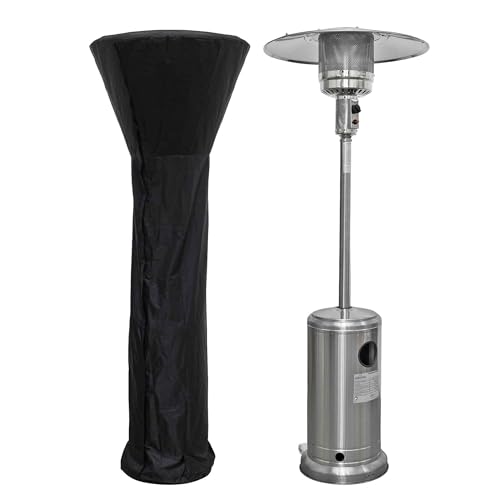5 People You Should Be Getting To Know In The Gas Patio Heaters Industry

The Comprehensive Guide to Gas Patio Heaters
As outdoor living becomes progressively popular, gas patio heaters have actually emerged as an essential element for extending the outdoor amusing season. Whether for a relaxing evening with buddies or a lively family event, these heaters provide heat and convenience that can change any outdoor space. This post checks out the numerous elements of gas patio heaters, including their types, benefits, functional mechanics, upkeep suggestions, and factors to consider for buying one.
What is a Gas Patio Heater?
A gas patio heater is a type of heating home appliance developed specifically for outdoor usage. Normally sustained by propane or gas, these heaters produce heat to combat the chill of the evening air, allowing outdoor social activities to continue even under cooler temperatures.
Kinds Of Gas Patio Heaters
Gas patio heaters come in several various styles, each matched for different requirements and aesthetic appeals. The common types consist of:
Freestanding Heaters:
- These are the most typical type and are normally high, with a wide base and a heater element at the top.
- They can quickly be moved around and are ideal for different outdoor settings.
Tabletop Heaters:
- Smaller and more compact, tabletop heaters are developed to rest on tables or other surface areas.
- They supply heat for smaller sized locations and are typically simpler to keep.
Wall-Mounted Heaters:
- These are fixed to a wall and are a terrific alternative for patios with minimal space.
- They offer a more long-term heating option and can complement outdoor decor.
Patio Fire Pits:
- While not solely heaters, gas fire pits offer warmth and ambiance simultaneously.
- They can function as a centerpiece for outdoor events.
| Heater Type | Description | Best For |
|---|---|---|
| Freestanding | Tall, mobile systems with a heating element on the top | Big open areas |
| Tabletop | Compact designs perfect for table surfaces | Small events |
| Wall-Mounted | Fixed systems supplying constant heat | Smaller patios |
| Patio Fire Pits | Integrated heating and ornamental feature | Ambiance and warmth |
Benefits of Gas Patio Heaters
Purchasing a gas patio heater offers many advantages:
- Extended Outdoor Enjoyment: Gas heaters allow house owners to enjoy their outdoor patios even during chillier months.
- Quick Heating Capability: Gas heaters warm up quickly, offering instant remedy for the chill.
- User-Friendly Operation: Most gas heaters feature simple ignition controls for ease of use.
- Aesthetic Appeal: Many gas heaters are developed to be aesthetically attractive, boosting the total look of your outdoor space.
- Versatile Fuel Options: Availability of both propane and gas designs caters to numerous requirements and choices.
Operational Mechanics
Gas patio heaters operate by transforming fuel into radiant heat. Here's a simplified breakdown of how they work:
- Fuel Source: Most gas heaters utilize propane or natural gas. The type of fuel impacts efficiency and availability.
- Ignition System: Most models come with either a manual ignition (using a lighter or match) or an electronic ignition (push-button).
- Heating Element: Once sparked, gas streams through a burner, where it is combusted to produce heat. Convected heat sp read s from the heating aspect.
- Heat Diffuser: Some heaters have a reflector to help disperse heat more evenly across a broader location.
Fuel Comparison
| Fuel Type | Pros | Cons |
|---|---|---|
| Propane | Portable, widely available | Requires tank replacement/refill |
| Gas | Cost-efficient if connected to a supply | Setup more complicated |
Maintenance Tips for Gas Patio Heaters
Proper care will extend the life of gas patio heaters. Here are some essential maintenance tips:
- Regular Cleaning: Keep the heater tidy from dirt and particles. Routinely wipe down the surfaces.
- Inspect Gas Supply Lines: Check for leakages or cracks in the gas lines. Use soapy water to find leakages by observing bubbles.
- Seasonal Checks: Before using a heater, check all parts and repair or replace any damaged parts.
- Storage: During off-seasons, keep the heater in a dry place or cover it for protection.
- Professional Servicing: Consider an expert check-up every year, particularly for gas models.
Factors to consider When Purchasing a Gas Patio Heater
When selecting a gas patio heater, keep the following factors in mind:
- Heating Capacity:
- Measured in BTUs, a greater BTU ranking offers more heat.
- Size and Weight:
- Depending on the space offered and whether the heater needs to be portable.
- Product:
- Stainless steel heaters use resilience and resistance to rust and rust.
- Style:
- Choose a style that matches your outdoor decoration.
- Security Features:
- Look for automatic shut-off functions or security tilt valves to prevent mishaps.
Frequently asked questions
Q: Are gas patio heaters safe to use?A: Yes
, when utilized according to the manufacturer's guidelines and security guidelines, gas patio heaters are safe. Always ensure appropriate ventilation.
Q: How long can one propane tank last?A: A basic 20 lb
propane tank can last anywhere from 8 to 30 hours, depending on the heat setting. Q: Can gas patio heaters be used indoors?A: No,
gas patio heaters are created for outdoor usage just due to the risk of carbon monoxide buildup in enclosed areas. Q: Do gas patio heaters require assembly?A: Most freestanding designs require basic assembly
, while tabletop and wall-mounted options may require more
particular assembly. Gas patio heaters are an appealing service for those looking to boost their outdoor experiences throughout the year.
By comprehending the various types, benefits, and functional mechanics, potential buyers can make informed choices that align with their needs. Appropriate upkeep and safety considerations will guarantee that these heaters remain reliable and safe, offering convenience to outdoor events for many seasons to come. With cautious choice and care, a gas patio heater can become a precious addition to any outdoor home.

